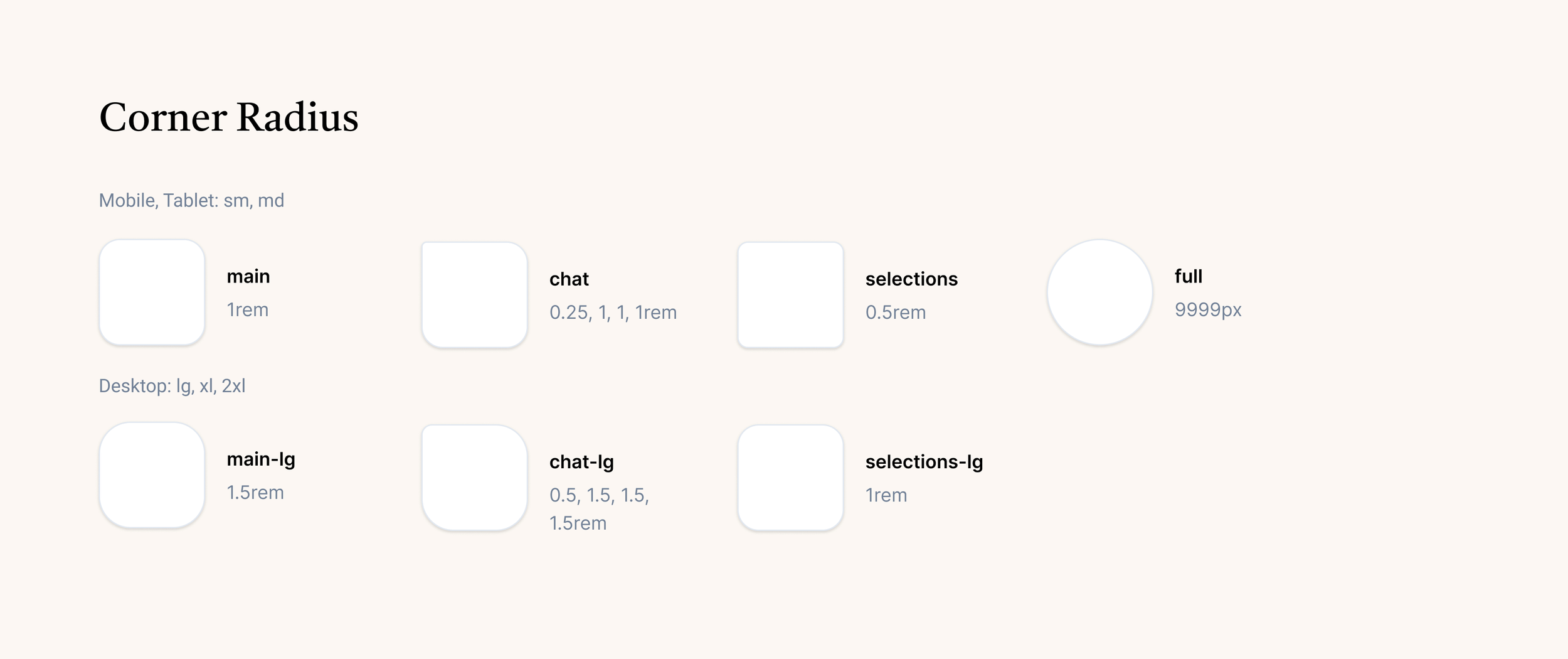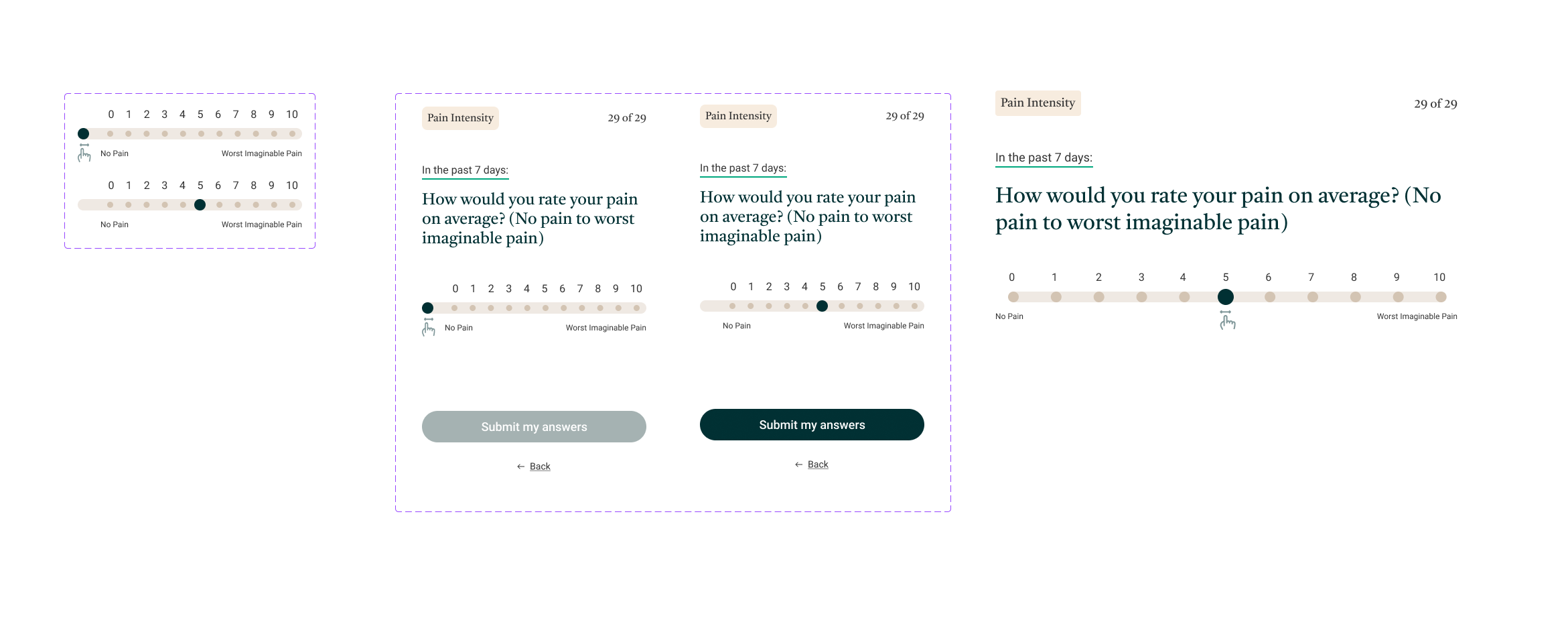
Fern Health: A compassionate design system for chronic pain management.
Empathy-Driven Design for Real People
Leading the creation of a design system for healing.
Leading with Compassion
Chronic pain affects every aspect of life, and too often, people feel unseen or misunderstood in their journey to find relief. I led a team to create the design system driven by a shared commitment to understanding and addressing the real human experience of living with pain.
Acknowledging the Human Experience
Our design system was intentionally built with empathy and compassion at its core, aiming to provide a safe, warm, and supportive environment for users navigating their most vulnerable moments.
Consistency and Clarity for Empowerment
Together, we structured the system to acknowledge the emotional and physical uncertainty that comes with chronic pain, ensuring that every interaction reflected the human experience. It’s not just about aesthetics—it’s about creating an atmosphere that makes users feel heard, valued, and empowered in their pursuit of better health.
Fern as a Compassionate Companion
By aligning our design principles with development efficiencies, we were able to ensure consistency across components while optimizing performance and scalability. For users, this means a seamless, intuitive experience that guides them with clarity and ease, empowering them to take control of their pain management journey.
Through this work, Fern became more than just a tool—it’s a compassionate companion that supports users every step of the way.

















Fern’s Design Principles
Principles that not only drove our team but shaped the design, voice, and interactions for a cohesive and empathetic user experience.
Empathy and Compassion
Every interaction should reflect understanding, care, and genuine support for users experiencing chronic pain.
Inclusive
Design solutions that are accessible and resonate with diverse users, considering a variety of backgrounds, abilities, and health conditions.
Human Experience
Focus on the lived experiences of users, ensuring the product resonates deeply with their emotional and physical needs.
Transparency & Trust
Build trust through transparency in the way data is handled, communicated, and used, creating a safe space for users.
Clarity & Simplicity
Prioritize simplicity in design, making interactions intuitive and easy to navigate, especially during challenging moments.
Support & Growth
Ensure the design fosters motivation and encouragement, helping users feel empowered to take control of their health journey.
Through this work, Fern became more than just a tool—it’s a compassionate companion that supports users every step of the way.
By aligning our design principles with development efficiencies, we were able to ensure consistency across components while optimizing performance and scalability. For users, this means a seamless, intuitive experience that guides them with clarity and ease, empowering them to take control of their pain management journey.
Fern Design & UX Components Before
Somyrst: Prescription DTx delivering CBT-I
Led research and design for the Somryst™ HCP Dashboard, turning a standalone FDA-authorized PDT into a clinician-trusted tool with clear progress, validated scores, and fast insight in real care.
Role:
UXR & Design Lead
Ran foundational interviews and co-creation with CBT-I specialists, sleep MDs, PCPs, and internal clinical partners
Mapped friction in reviewing digital treatment progress and interpreting scores
Defined the focused metric set and IA for speed-to-insight
Designed key workflows and visualizations for progress, scores, and sleep window
Shaped a calm, trust-forward UI system for tablet and desktop use
Outcomes
+40% provider-reported confidence monitoring progress
Clinician NPS +45
+25% completion of all six cores when HCPs actively used the dashboard
1.5x higher likelihood of patients adhering to CBTi when HCPs used data and insights in their feedback and check-ins with patients.
In Market: 50–60K prescriptions, 57% fulfillment, 100M+ covered lives with access to Pear PDTs
Avg clinician session: 4.5 minutes per patient
90% of prescribers logged in during active treatment
Deliverables
Patient Overview with prescription status and progress timeline
Core Progress Tracker across CBT-I treatment
Validated metric visualizations: ISI and PHQ-8 with scoring bands, sleep efficiency, and sleep window summary
Longitudinal progress table for quick scan across cores
Fully scalable component and design system























